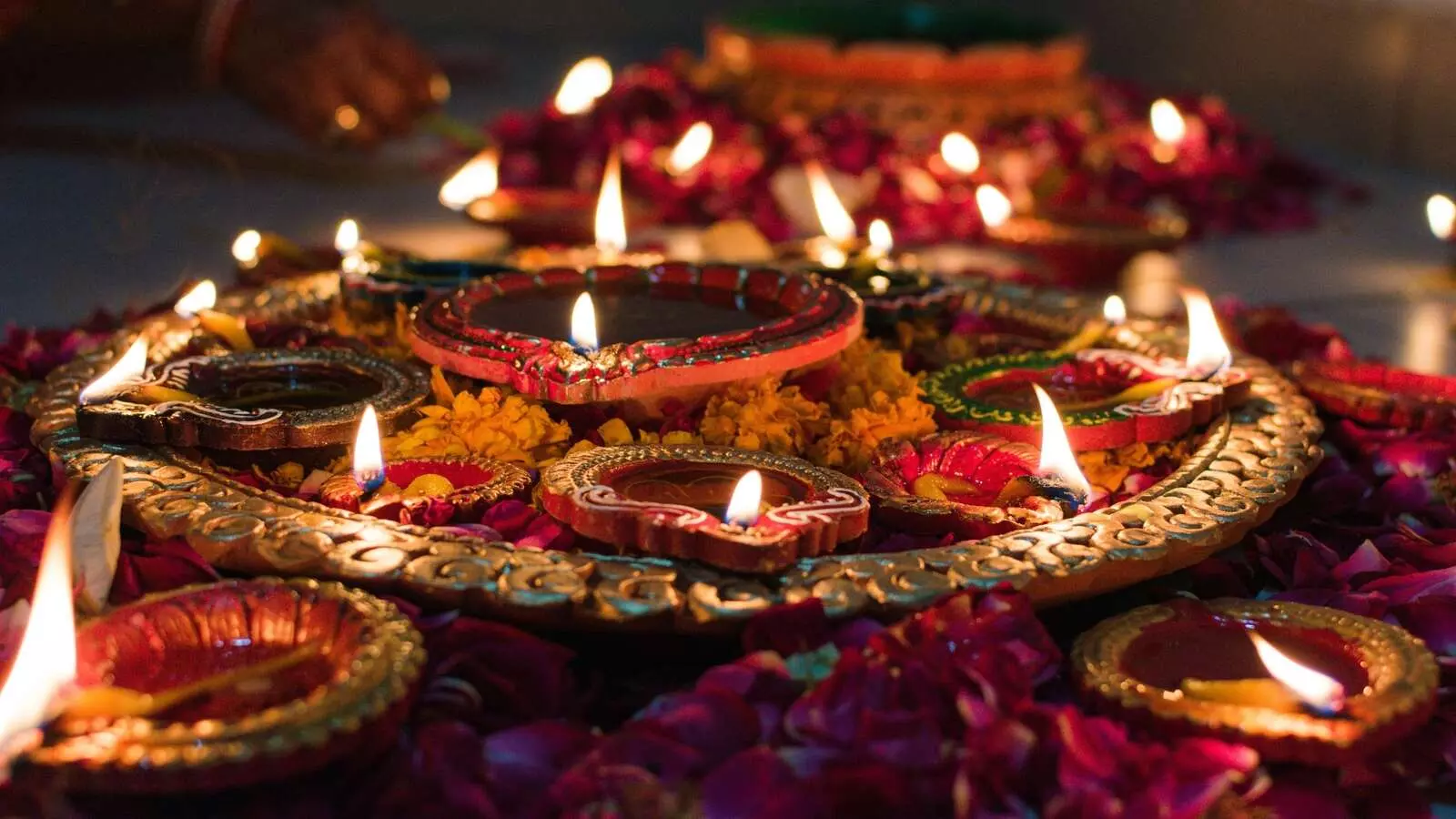Beyond diyas and myths: The psychology and cultural continuity behind Choti Diwali
Across India, Abhyanga Snan, a ritual oil bath before sunrise, is considered the defining act of Choti Diwali. The logic, experts say, is both spiritual and practical
By - Anoushka Caroline Williams |
Hyderabad: While Diwali steals the spotlight, its quieter eve, Choti Diwali or Naraka Chaturdashi, carries its own set of intriguing customs. Some are rooted in ancient scriptures, others have evolved through family folklore and many continue to shape how Indians prepare for the festival of lights.
Beneath the familiar oil baths and early morning lamps lies a web of fascinating beliefs, a blend of ritual, psychology and cultural continuity.
The Dawn Bath: Oil, turmeric and the symbolism of purification
Across India, Abhyanga Snan, a ritual oil bath before sunrise, is considered the defining act of Choti Diwali. The logic, experts say, is both spiritual and practical.
“Oil massage followed by a warm bath was seen as a physical cleansing that paralleled moral purification,” explained Dr Radhika Iyer, a cultural historian speaking to NewsMeter.
“The idea was that by sunrise, one had symbolically shed the darkness of the past year, a small personal echo of Lord Krishna’s slaying of Narakasura.”
Families often mix sesame oil with turmeric and sandalwood paste, believed to draw out impurities. In South India, this ritual is followed by lighting small lamps at every doorway, a gesture meant to welcome light and repel misfortune.
Fourteen diyas, fourteen hopes
One of the lesser-known customs observed on Choti Diwali is the lighting of fourteen diyas. Each lamp, according to folklore, represents a different form of protection or blessing for the household.
“In old Maharashtrian and Gujarati homes, 14 diyas are placed around the house, near water tanks, cow sheds, thresholds, and corners,” says Priya Deshmukh, a heritage researcher. “The number fourteen corresponds to the myth of King Bali’s return from the underworld during Diwali, as mentioned in the Puranas.”
Some believe the diyas act as guiding lights for ancestral spirits visiting the home during this auspicious period, an echo of the more well-known Pitru Paksha traditions earlier in the year.
The silent morning rule
An old superstition observed in parts of rural India forbids speaking before one’s oil bath on Choti Diwali. The first words, it is said, can influence one’s fortune for the coming year.
“This was less about magic and more about mindfulness,” notes Dr Sushant Bhat, a sociologist who studies ritual behaviour. “The silence before the bath was meant to center one’s thoughts, to begin the day with focus and calm before the bustle of the festivities.”
Today, a few families still follow it, often humorously reminding younger members to “stay quiet until the oil is off.”
Don’t borrow, don’t lend
Among the more practical superstitions of Choti Diwali is the belief that money, oil, or fire should never be borrowed or lent on this day. Doing so, it is said, transfers prosperity or energy away from the home.
While this may sound like folklore, economists find an underlying sense of fiscal caution. “Festivals historically marked times of high expenditure. The ‘no lending’ rule acted as a social check to keep households from depleting resources,” says Dr S Madhavan, a cultural economist. “It also reinforced the idea that wealth, like light, should originate within one’s home.”
The small flame in the backyard
In many North Indian towns, families light a lone diya at the back of the house after dusk on Choti Diwali. It is not for display, it is for remembrance.
“This diya is often lit for Yama, the god of death, to pray for protection from untimely death or accidents in the coming year,” says Acharya Ramesh Tripathi, a priest based in Varanasi. “The placement in the backyard or near drains has symbolic meaning; it represents light sent into darkness.”
The act, while solemn, reflects a distinctly Indian worldview: one does not banish darkness entirely but seeks to balance it with light.
Cleansing spaces and spirits
Choti Diwali is also known as the day when homes are thoroughly cleaned, courtyards sprinkled with ganga jal or cow dung water, and the first set of diyas lit at dusk. The ritual of cleansing has a dual purpose: hygiene and harmony.
“In traditional Indian thought, impurity was both material and mental,” explains Dr Iyer. “When people cleaned their homes before Lakshmi Puja, they were also making mental space for abundance.”
This philosophy has found new expression today. Many young urban Indians view Choti Diwali as a “declutter day”, a time to organise homes, delete old files, and start afresh before the main celebration.
The myth that shapes it all
Every custom on Choti Diwali ties back to the story of Lord Krishna’s victory over the demon Narakasura, symbolising triumph over ignorance and greed. The myth, scholars note, has shaped both the ritualistic and ethical frameworks of the day.
“Festivals like Choti Diwali are cultural scripts,” says Dr Bhat. “They encode moral lessons, that renewal follows reflection, and that light must be invited through conscious action.”
Between fear and faith
Superstitions often thrive in the space between fear and faith, and Choti Diwali’s customs reflect this balance. Whether one believes in ancestral spirits, symbolic silence, or the luck of a lamp, these traditions continue to offer meaning in an age that often seeks reason alone.
“Even the smallest flame, when lit with intention, holds psychological power,” says Dr Madhavan. “That’s what makes Choti Diwali, with all its small, quiet rituals, one of the most meaningful days in the Indian festive calendar.”